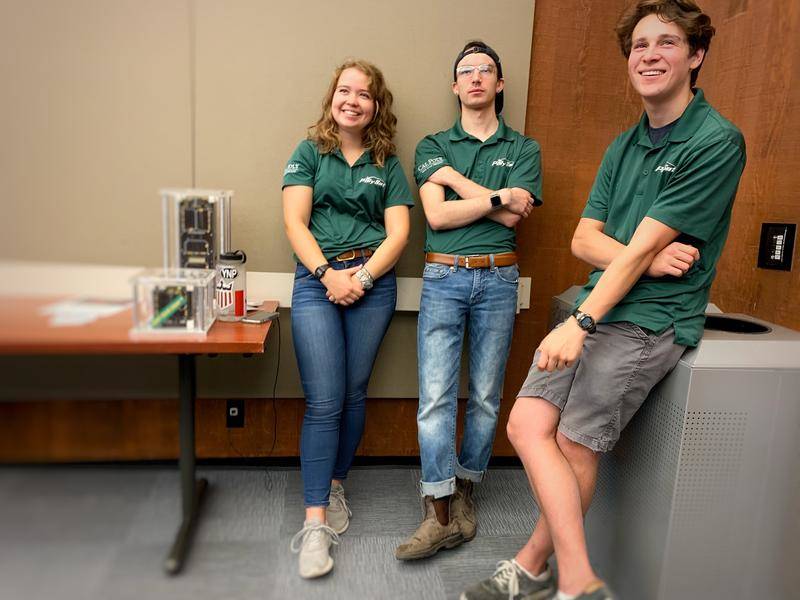When NASA’s InSight mission to Mars took off from the Central Coast’s Vandenberg Air Force Base six months ago, two little satellites piggybacked along for the ride. They’re called CubeSats, and they’re about the size of briefcases. Cal Poly students in San Luis Obispo had a hand in their departure from Earth and the data the devices are sending back from Mars.
Kate Parkinson and few other students stood in the back of a conference room in Cal Poly’s Student Union and watched the final minutes of InSight’s decent to Mars Monday afternoon. Parkinson held her hands over her mouth as a NASA operator counted down the approaching distance to the Red Planet. Everyone clapped when NASA engineers announced InSight had successfully landed.
“My class starts right now, but this is a little bit more important than missing 10 minutes of class,” Parkinson said.
Parkinson is a member of PolySat, a student-run, a multi-discipline research lab on the Cal Poly campus. The 20-year-old aerospace major said there are about 80 students in the program.
“[We’re] one of the bigger CubeSat university programs in the nation,” Parkinson said. “Which is helped by the fact that [CalPoly is] where the CubeSat standard started.”
